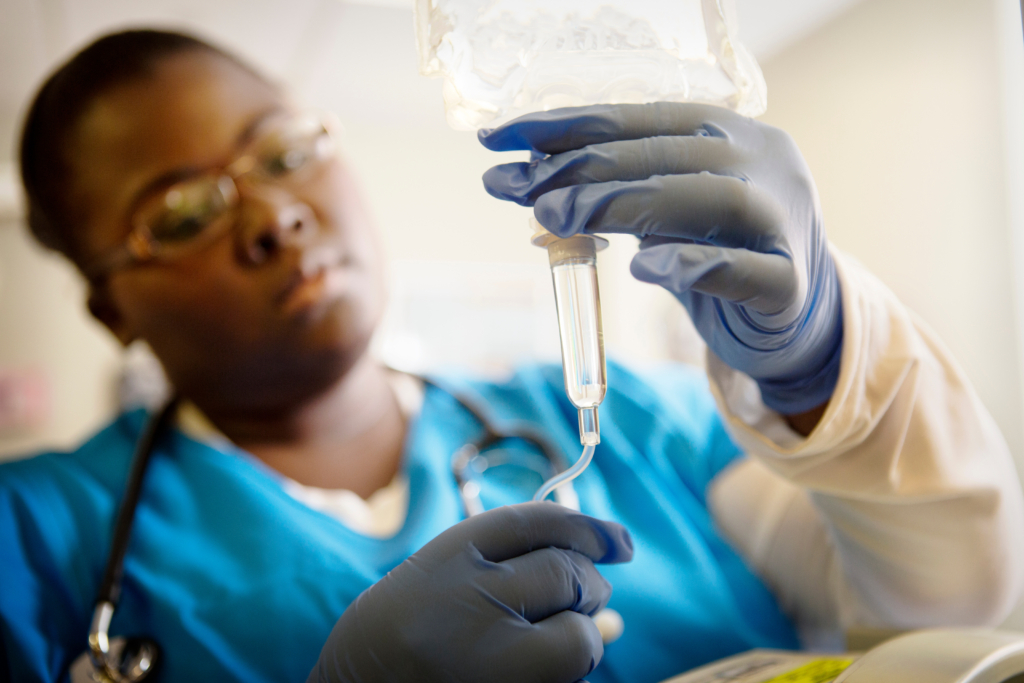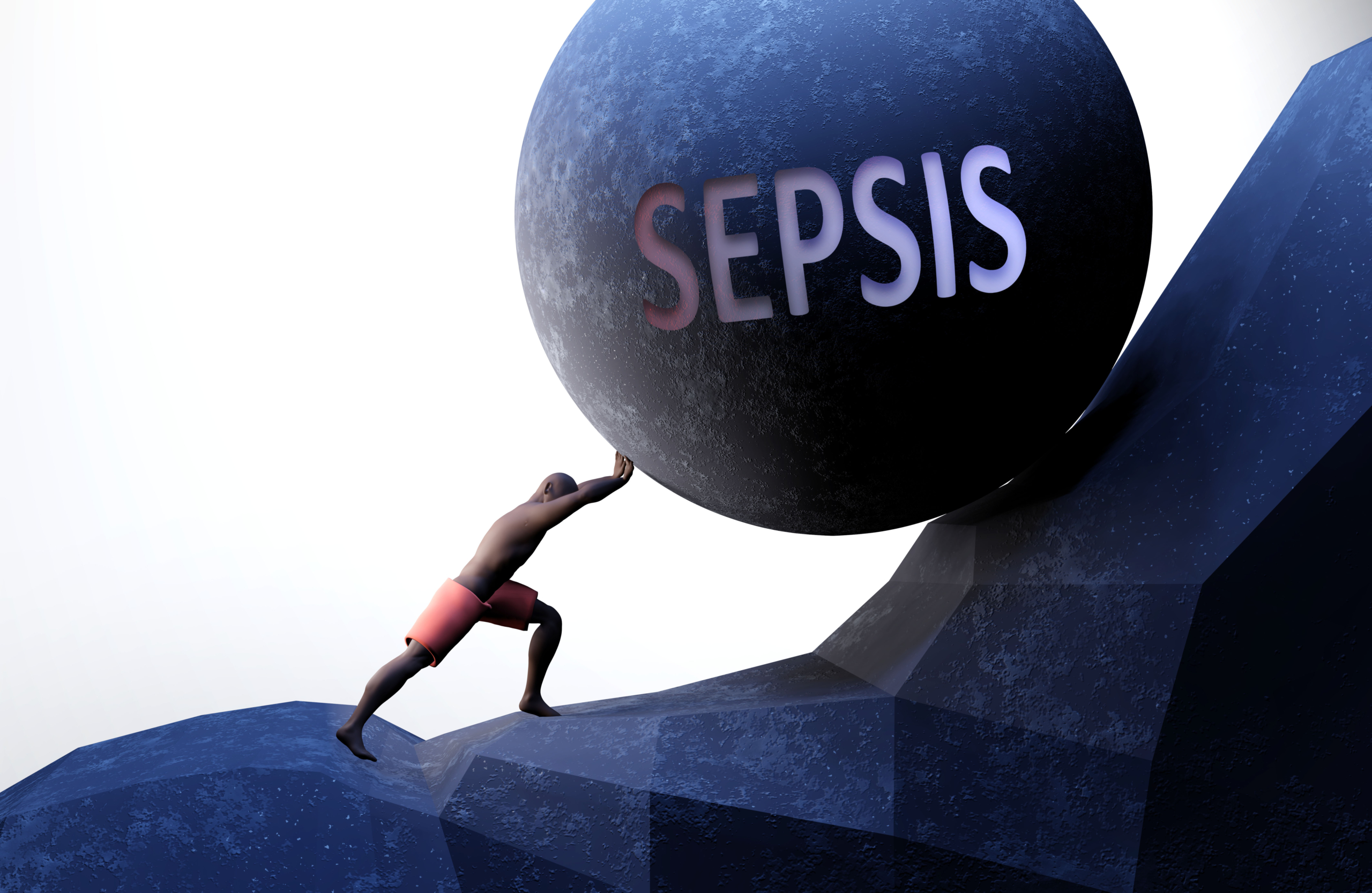This past week was Sepsis Awareness Month. Sepsis is a serious medical condition that affects millions of people worldwide every year. It is caused by an infection that triggers a systemic inflammatory response in the body, which can lead to organ failure, (including the heart, lungs, kidneys, brain, and skin.) tissue damage, limb loss and even death if not recognized and treated quickly. In this blog post, we’ll discuss what sepsis is, how it can affect your health, and what treatments are available. As a result, it’s important to understand the signs and symptoms of sepsis and how to respond if you or someone you care for is at risk. Here’s what you should know. According to the CDC (Center of Disease Control and Prevention)
- At least 1.7 million adults in America develop sepsis.
- At least 350,000 adults who develop sepsis die during their hospitalization or are discharged to hospice.
- 1 in 3 people who die in a hospital had sepsis during that hospitalization.
- Sepsis, or the infection causing sepsis, starts before a patient goes to the hospital in nearly 87% of cases.

We have an associate advocate we know that is an attorney in the Midwest. He had his sepsis mis-diagnosed several years ago and had parts of both arms and legs amputated because of sepsis. The dangers are real.
There has been a big push for education and awareness for sepsis throughout the medical community, but it is still important to be aware of the signs and symptoms to help advocate for your loved one or yourself.
Hospitals have screening tools that they can use to look at a patient’s symptoms and determine if they might be meeting “Sepsis Criteria” by looking at certain blood tests and ranges of vital signs. This helps early treatment.
What Is Sepsis?
Sepsis occurs when an infection enters the bloodstream and causes inflammation throughout the body. Sepsis typically occurs when bacteria enter your bloodstream from another infection elsewhere in your body. For instance, a urinary tract infection (UTI) or pneumonia may cause bacteria to spread from the bladder or lungs into the bloodstream.
Sepsis, also known as blood poisoning, occurs when an infection spreads throughout the body. It can affect anyone regardless of age or gender. It can be caused by bacteria, viruses, fungi, or parasites, but the most common cause is bacterial sepsis. You can get sepsis from viruses such as Covid or Influenza. When these organisms enter the bloodstream, they trigger an immune system reaction that leads to inflammation and the release of chemicals into the body. These chemicals cause changes in blood pressure and other vital signs that can be dangerous if left untreated.
Your circulation of blood is being reserved and funneled to your major organs and this is how you could lose circulation to your extremities such as arms and legs and may lead to amputation if not caught early.
Symptoms of Sepsis
The signs and symptoms of sepsis vary depending on the severity of the infection.
If you suspect someone has sepsis or may be at risk for developing it, there are certain signs to watch out for. The main symptom is a high fever (over 101°F). Other symptoms include chills, high heart rate, abdominal pain, rapid breathing or shortness of breath, slurred speech, dizziness or lightheadedness confusion or disorientation, low blood pressure (hypotension), extreme fatigue and muscle aches, nausea or vomiting, discomfort in the chest area, skin discoloration (usually pale), and decreased urination. You could also have sweaty or clammy skin. We want to avoid septic shock.
If you experience any of these symptoms after an infection or injury, seek medical attention immediately as sepsis can lead to organ failure if left untreated.

Treatment for Sepsis
The key to treating sepsis is prompt diagnosis and treatment. Treatment typically includes antibiotics along with supportive care such as IV fluids and oxygen therapy as needed and possibly fluids to help restore your electrolyte balance in your body. In more severe cases of sepsis, other treatments such as advanced oxygen therapy or dialysis may be necessary to help manage organ failure that has occurred due to sepsis-related inflammation throughout the body. This may also include any other treatment needed for the cause of sepsis. Early recognition of sepsis signs and symptoms is essential for successful treatment outcomes; therefore, it’s important to seek medical attention immediately if any of the above symptoms occur after an injury or infection.
Prevention
The best way to prevent sepsis is to practice good hygiene habits such as frequent hand washing with soap and water and avoiding contact with people who are sick. Additionally, getting regular checkups will help identify infections before they spread throughout your body.
Preventive measures such as vaccines for certain infections such as pneumonia (e.g., pneumococcal) can help reduce your risk for developing sepsis in the first place.
People with chronic diseases needing frequent treatment or impaired immune systems may be at greater risk as well as babies under the age of one. In general people over the age of 65 are also at greater risk. As an adult child of an aging parent, or grandparent, it is important to keep track of when they are not feeling well and make sure medical treatment is completed in a timely manner.

Conclusion:
Sepsis is a life-threatening condition that affects millions of people around the world each year; however, with early recognition and proper treatment it can be managed successfully. Being aware of the signs and symptoms of sepsis is essential for adults—especially those caring for elderly parents or other loved ones.
If you have been infected with a virus or bacteria or had an injury recently that could put you at risk for developing sepsis look out for warning signs like fever over 101°F along with other symptoms mentioned above so you can get prompt treatment from your doctor before it becomes too severe.
Taking preventative measures such as getting vaccinated against certain infections can also help reduce your risk of developing sepsis in the first place! However, even with these measures in place it’s still possible for it to occur so knowing how to recognize its symptoms could save your life or the life of someone you love!
We hope this blog post has been of value to you. We don’t want to scare anyone, but our goal is education and awareness. Seeking early treatment is the key to treating sepsis successfully.
Don’t forget to pop in and join our private Facebook Community where we “Speak out on Caring for Aging Parents”. You will find discussions both in the chats and live. Our goal is always to reduce stress and eliminate overwhelm through education, support, and plans while making sure you understand you do not have to go on this healthcare journey alone.
Take care and we will see you back here soon. If you would like to receive our free checklist on “11 Signs Your Aging Parent May Need Help in the Home” you can also grab that HERE.
Take care,
Pam and Linda
Your Nurse Advocates
Resources: Your Nurse Advocate Consulting Website
https://www.cdc.gov/sepsis/what-is-sepsis.html
https://www.cdc.gov/sepsis/pdfs/Consumer_fact-sheet_protect-yourself-and-your-family-P.pdf https://www.mayoclinic.org/diseases-conditions/sepsis/symptoms-causes/syc-20351214





